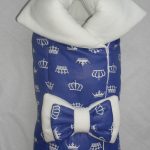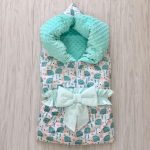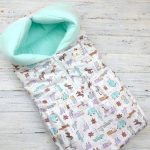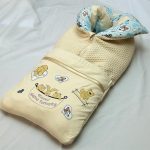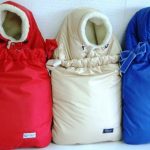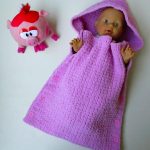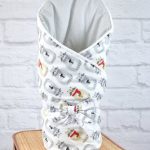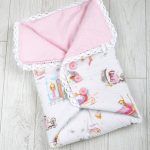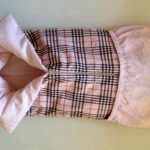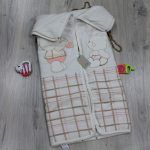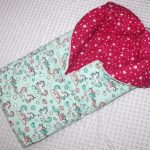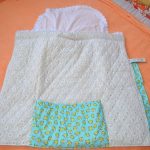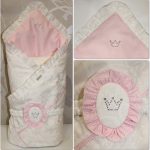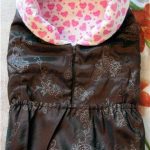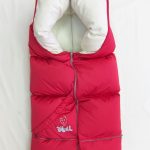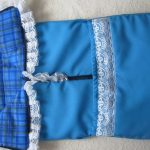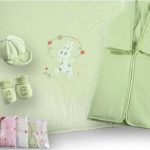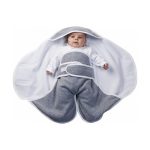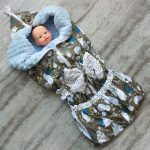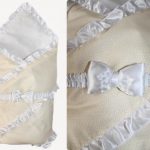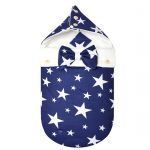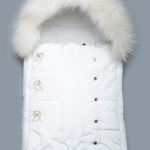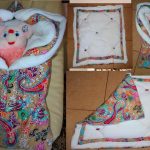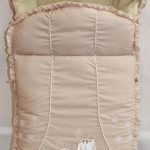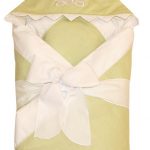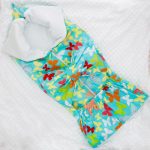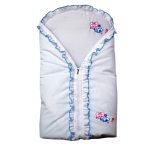Blanket transformer for newborn
Waiting for the birth of the baby, buy a lot of things. Often, this list includes a blanket-transformer - convenient for parents and children, an invention that combines an envelope and a blanket. When choosing future parents have different questions. We will answer all these difficult and not so questions in this article.
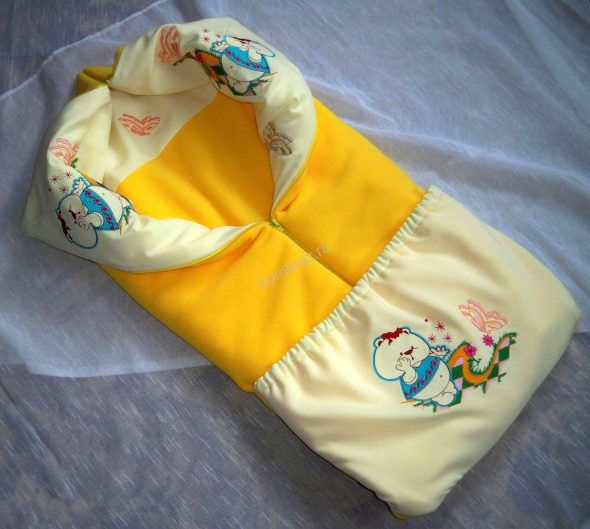
Bright blanket-transformer suitable for a newborn boy and girl
Content
- 1 Envelope for newborns
- 2 Approximate algorithm for choosing a blanket for a newborn
- 3 Materials
- 4 Mounts and transformation mechanisms
- 5 Blanket transforming do it yourself
- 6 Video: Envelope (blanket-transformer) to discharge the newborn with his own hands. Master Class.
- 7 Photo-collection of beautiful transforming envelopes for kids:
Envelope for newborns
Such a blanket is a universal thing. It can be used as an envelope for discharge from the hospital. How to choose the perfect option?
Transformers blankets can be classified by season.
- Winter Warm option, designed for temperatures from -7 to -25 degrees. When buying do not pursue the maximum warming, count on the temperature of minus 7-15 degrees. If the frost is stronger than long walks are not recommended. And in the case of extreme cold, you can always warm the child with an additional blanket. Baby should not be hot.
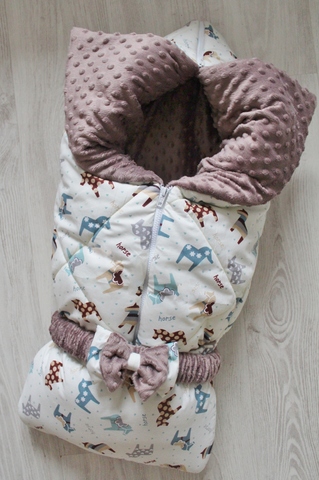
Winter blanket-envelope transformer on discharge
- Spring-autumn or demi-season. Created for temperatures from -5 to +10 degrees. When choosing, pay attention to the water resistance of the outer material and the presence of a hood.
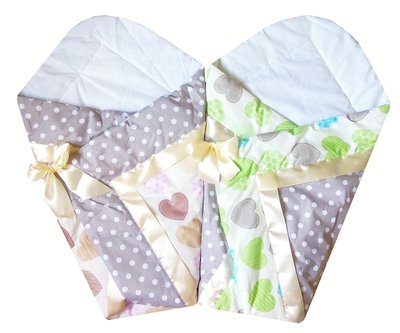
Demi-season envelope with hearts for a newborn
- Summer Normal blanket transformer without insulation.
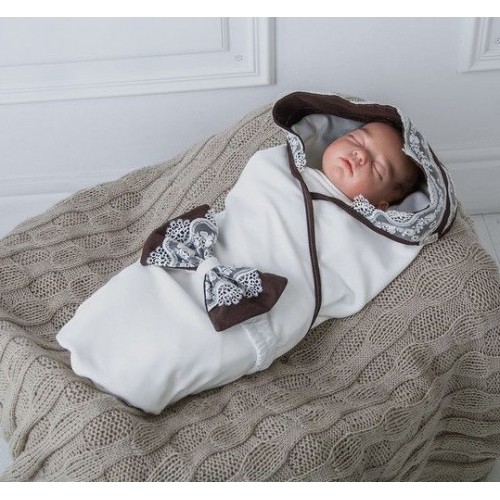
Knitted summer plaid envelope for your baby
To size.
- 80 to 80 centimeters. For babies up to 3 months and up to 60-65 centimeters of height.
- 90 to 90 centimeters. Good for kids a little older. Up to 75 centimeters tall.
Approximate algorithm for choosing a blanket for a newborn
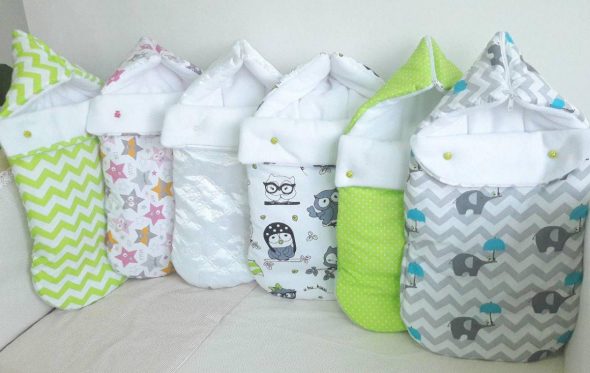
Choose a baby blanket-envelope, depending on the season and the desired colors
- Determine the season. You can use a blanket transformer until you reach eight months. Calculate what seasons will be at this time based on the date of birth. If the baby finds several seasons, you can find or sew yourself a blanket with a changing lining, similar to a warmed duvet cover, where you can put different linings depending on the weather.
- Do not forget about the weather in your area. Do not look blindly at the season.
- Determine the size.
- Choose hypoallergenic materials that are easy to wash and dry quickly.
- When you first take a baby from the hospital, I want to choose a beautiful envelope. Do not be fooled by ruches and bows that are not removed from the blanket - all this beauty will be difficult to keep clean. Better pay attention to ribbons and brooches. They look no less elegant and easily removed.
Materials
An important question for choosing a quality and convenient envelope is its material. Different materials are needed for insulation, inside and outside. Important qualities for the inside - softness, hypoallergenic, durability, ease of cleaning, hygiene. Therefore, often use cotton fabrics - satin, calico, flannel, knitwear. For the outer side, they choose heat-absorbing hygroscopic fabrics that are not very dirty and easy to clean - plush, fleece, velvet, wool, raincoat fabric.As a heater, the choice falls on materials with a high air-conductivity, well-stored heat, hypoallergenic and not requiring dry cleaning - holofiber, down, silicone, synthetic winterizer, and sometimes wool.
Mounts and transformation mechanisms
There are several common options for turning a blanket into an envelope.
- Lightning. The fastest transformation option, but the baby can get hurt about solid details. In the event of a breakdown difficult to replace.
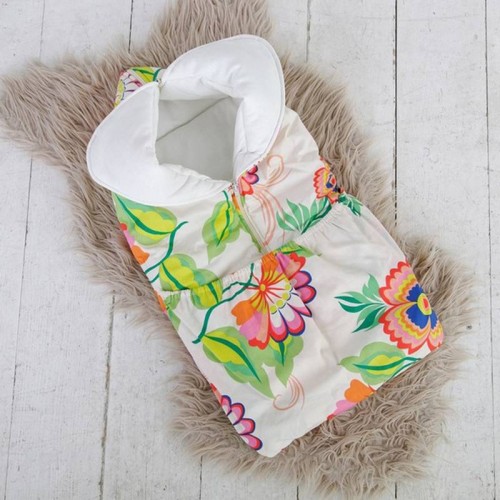
Transforming envelope on a lightning for the newborn for the summer period
- Tapes. Aesthetic, but a long way. You can adjust the fixation and easily replace the tape.
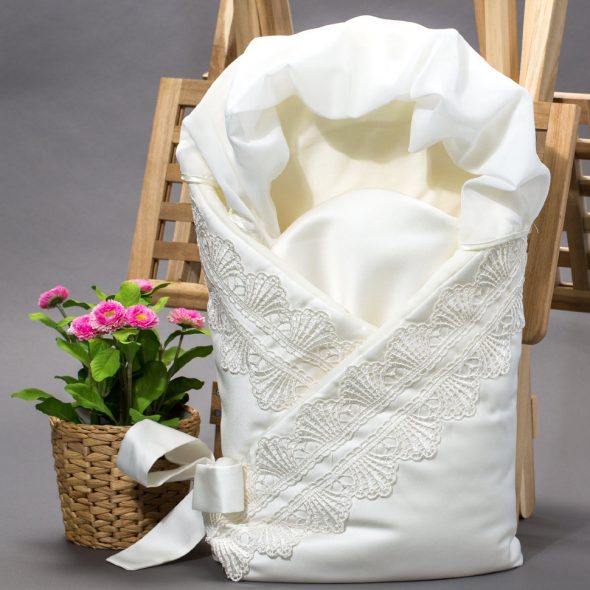
Silk envelope blanket spring-summer with ribbons
- Buttons, buttons. Takes an average amount of time, have solid details. At the same time reliable and easy to change.

Knitted envelope for a newborn with buttons
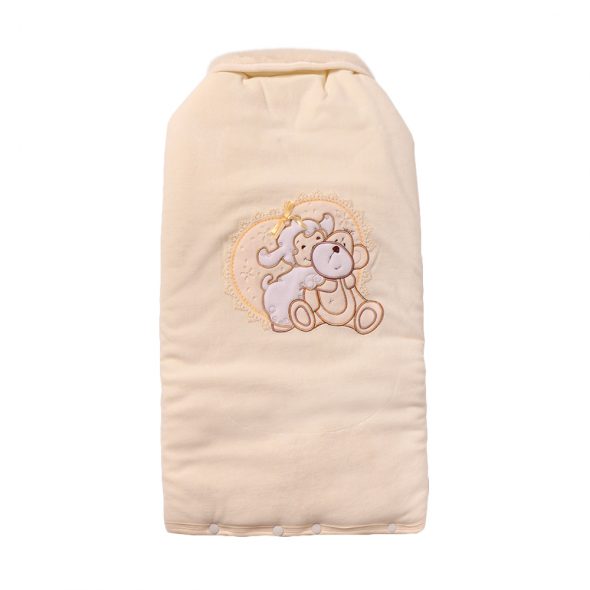
Fur plaid envelope with beige buttons
The choice of mechanism for an envelope depends on many factors - the age and activity of the child, the amount of free time of parents and the accuracy of the baby.
Blanket transforming do it yourself
Sewing a multi-tasking envelope for a baby is not a difficult task, it is enough to have basic sewing skills and a sewing machine to give your child a unique blanket. Algorithm sewing blanket-transformer on the zipper.
- Check the availability of all necessary for self-tailoring: the fabric of the upper and inner layer, insulation, elastic 40-50 cm, 55 and 25 cm of zipper, scissors, thread, pins.
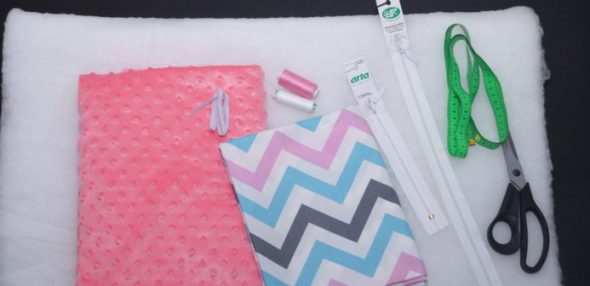
Fabric and accessories for the envelope
- Make the patterns. They can be done directly on the fabric - nothing complicated here. Mark the rectangles 90 by 85 centimeters. Pattern pockets do a little more difficult. On the outer and inner fabric, draw a trapezoid with beveled corners. The bottom line is 45 cm, the top one is 50, with the top 2.5 cm on each side slightly sloping down. Trapeze height - 25 cm.

Making patterns for fabric
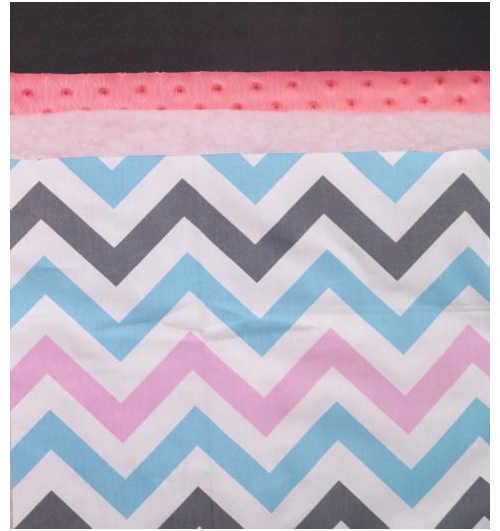
Cut out such parts from the outer and inner fabrics and insulation
- Cut out the details. Three equal parts for the envelope - outer layer, inner, insulation. Two equal parts for the pocket - the outer and inner layer.
- Put the outer layer on the wrong side to the insulation, pin it together and stitch it several times, including along the edges.
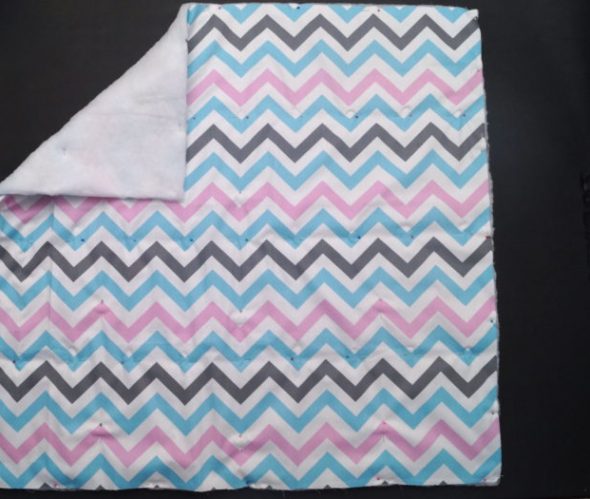
Quilted cotton fabric with insulation
- Fold the pockets face down to each other, sew them along the long edge, twist, iron.
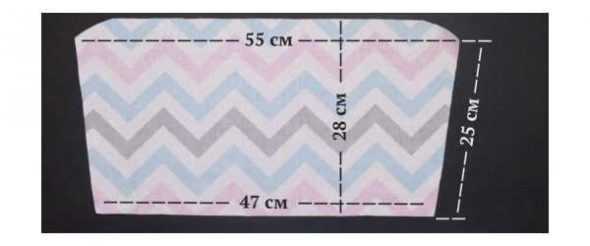
For the pocket on the legs cut off 2 parts
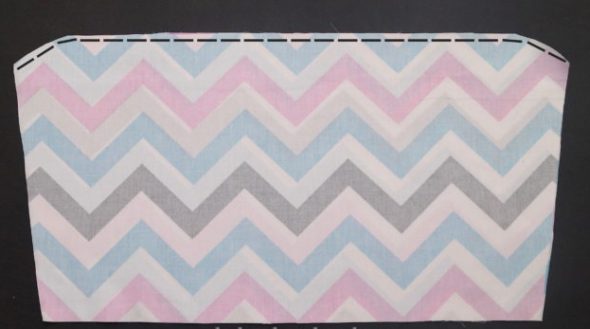
From the seamy side we sew both parts on top
- Departure from the resulting seam distance a couple of millimeters more than the width of the elastic and stitch, creating a rocker.
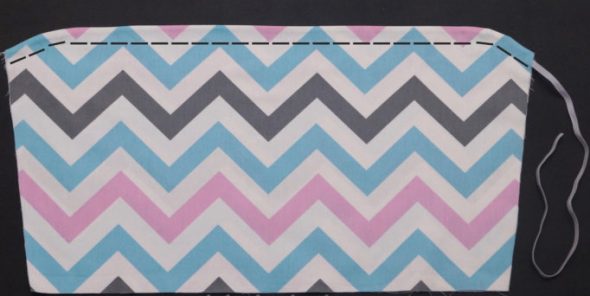
Wrenched, ironed and stitched on top, where it is marked with dotted lines, insert the gum
- Insert the elastic in the drawstring, trim the fabric so that the trapezium turns into a square, fasten the elastic on the sides, leaving one and a half centimeters from each edge.
- Sew the pocket on the sides, bending the edge inward, at the same time securing the gum. Cut off the extra tips.
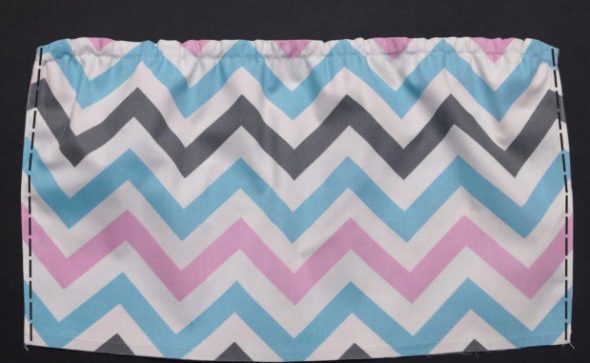
Fix the gum on both sides and stitch on the sides, bending the edges inward
- Attach a pocket to the bottom edge of the pre-stitched outer layer and insulation in the middle, stitching along the bottom and side edges of the pocket. Sew the side edges on a flat line, even if they appear to be round.
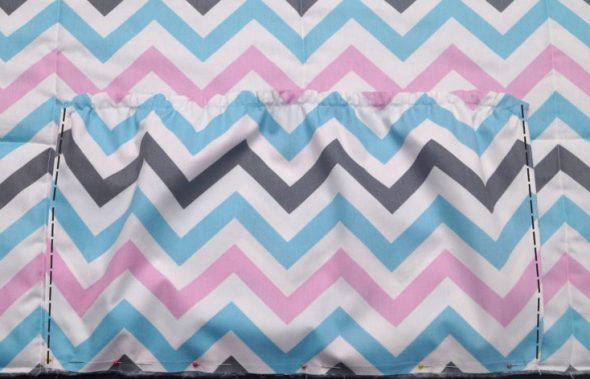
We sew the resulting product to the cotton side of the future blanket from the bottom in the middle
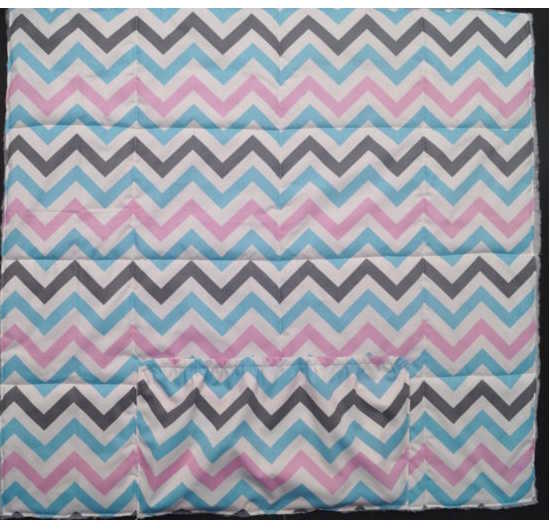
Leg pocket on future blanket
- Put the receiving product face up and the side with the pocket down, put the inner layer on top of the inside out. Cleave with pins and sew together along the bottom edge.
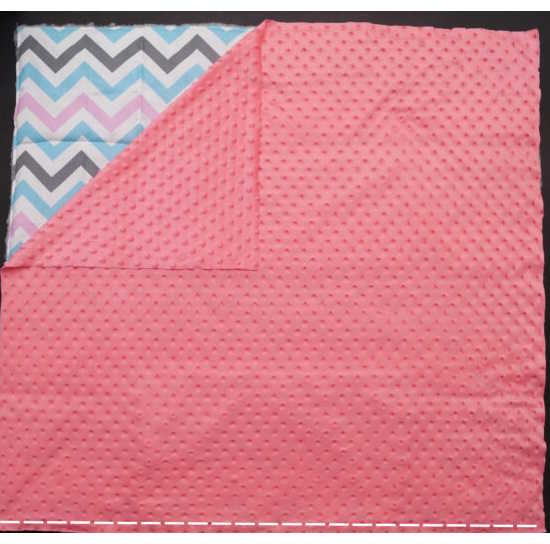
We put the plush detail on the duvet so that the front sides of the fabric look at each other and stitch from below
- Sew side of the split zipper 50-55 cm on both sides of the sides. Starting from the bottom edge. First, sew the zipper to the outer layer, then apply the inner layer, pin it together and sew it on the machine.Sew the top edge as well, leaving a hole exactly the size of a small zipper in the open state exactly in the middle.
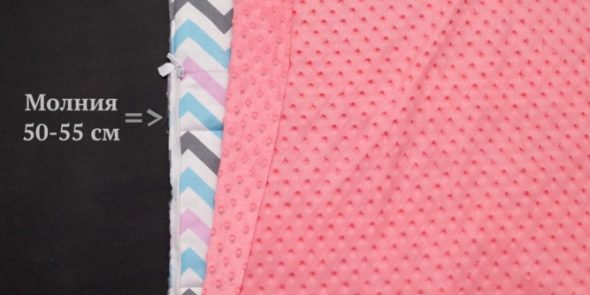
We sew a zipper with a length of 50-55 cm on the sides below
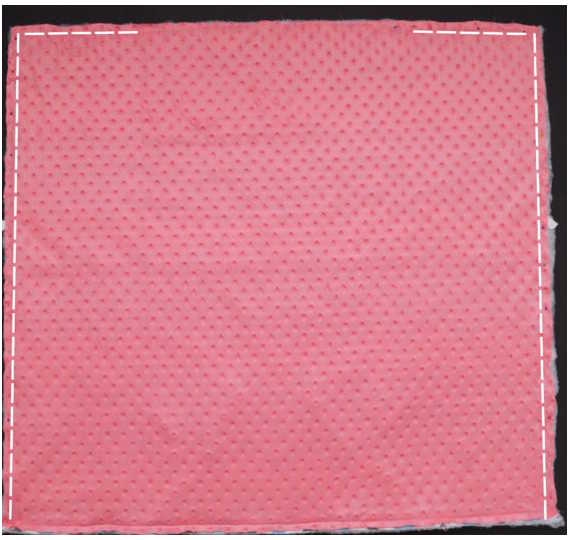
We cover with a layer of plush and stitch on the sides and top, leaving a small hole for a small zipper
- Turn the blanket through this hole.
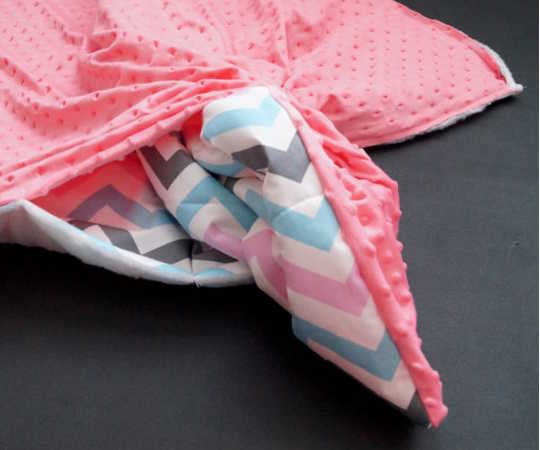
Turn the duvet on the front side through this hole.
- Sew a small zipper. First, to the outer layer, then to the inner layer, bending the edges inward.
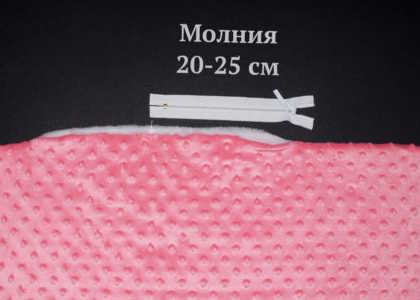
Sew a small zipper to the top of the envelope
Your transforming blanket is ready!
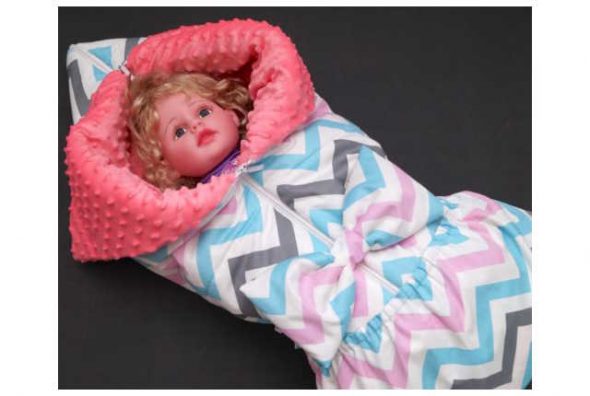
A beautiful two-sided envelope for the baby is ready
What can be said about the transformer blanket in conclusion? It is easy to manufacture, convenient to use. Having correctly picked it up, you will provide a child with a happy infancy.
Video: Envelope (blanket-transformer) to discharge the newborn with his own hands. Master Class.
Photo-collection of beautiful transforming envelopes for kids:
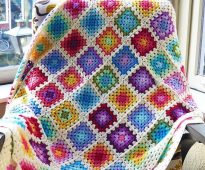 Knit a crochet crochet of yarn
Knit a crochet crochet of yarn
 How to lay bedding
How to lay bedding
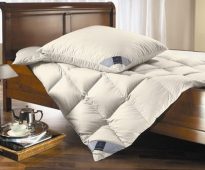 Quilt size
Quilt size


